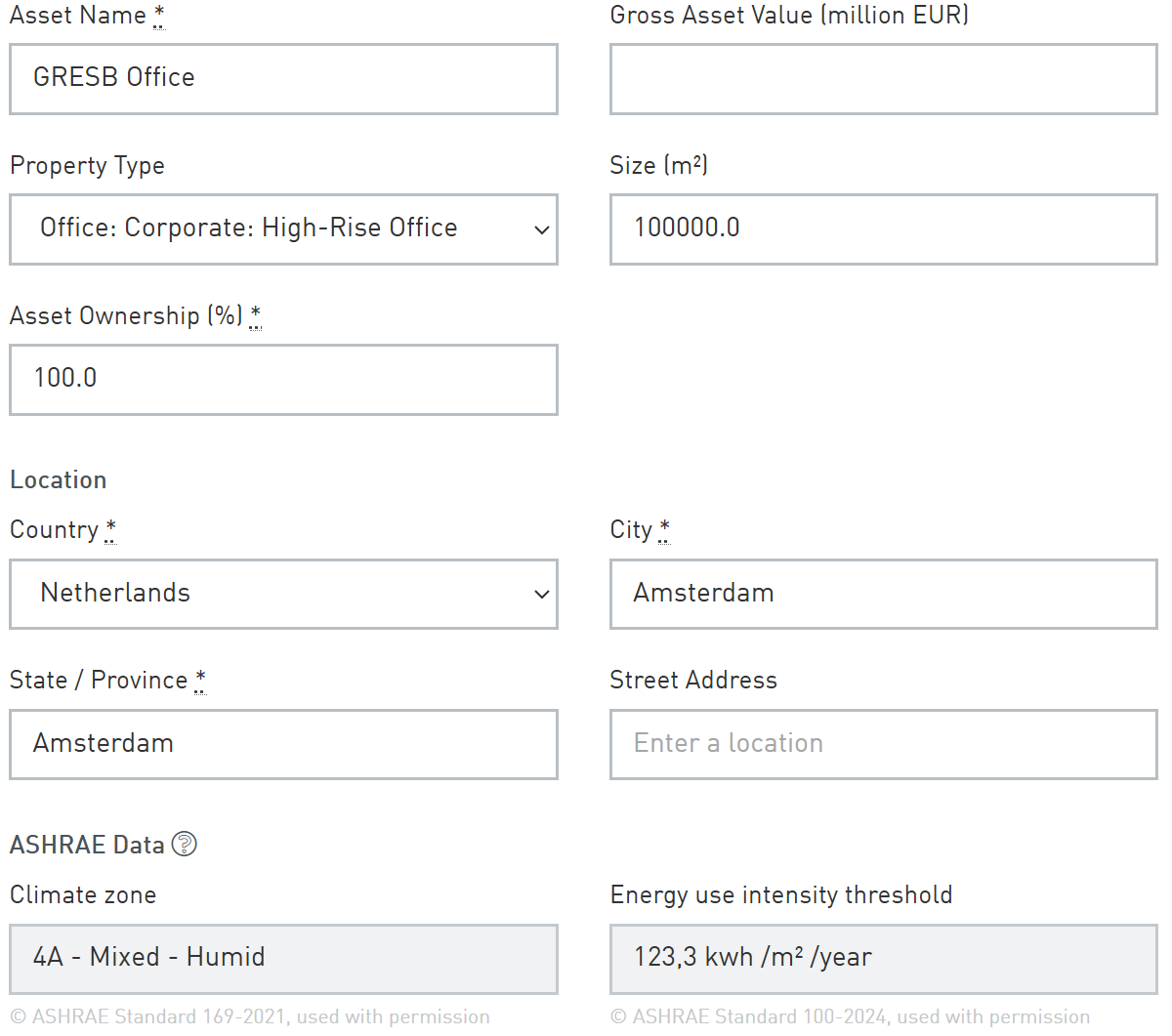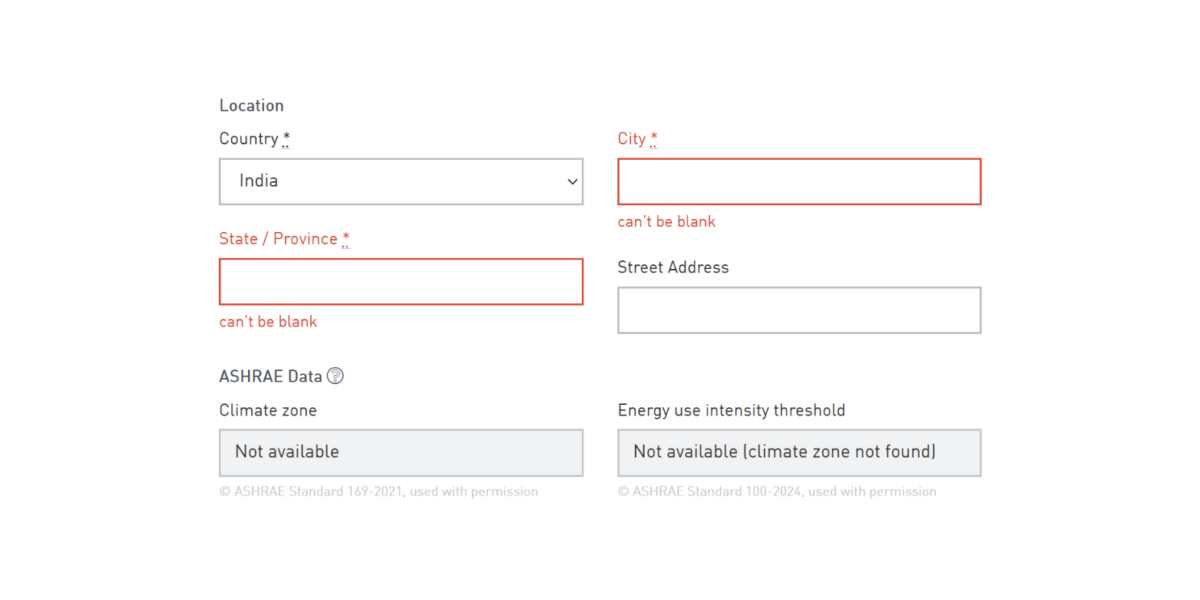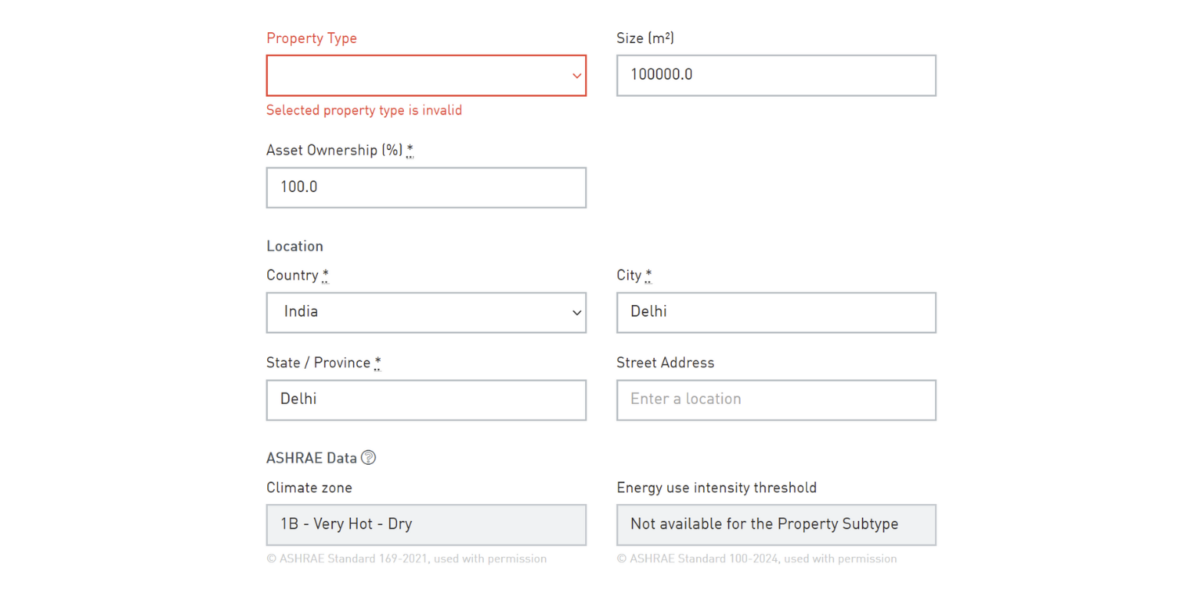About ASHRAE
What are ASHRAE and the ASHRAE Standard 100?
ASHRAE is an international society dedicated to advancing human well-being through sustainable technology for the built environment. Its work focuses on building systems, energy efficiency, indoor air quality, refrigeration, and overall sustainability across the industry.
To support this mission, ASHRAE develops standards and guidelines that promote best practices and consistency in the design, installation, testing, and performance of building systems. The organization currently maintains over 80 active standards and guideline project committees, which serve as foundational tools for industry professionals, regulators, and policymakers worldwide.
Among these standards, ASHRAE Standard 100 stands out as a code-ready building performance standard that provides processes and procedures for reducing energy consumption and carbon emissions through improved energy efficiency and performance of all types of existing buildings, including residential, commercial, institutional, and industrial, making it highly relevant for organizations seeking to meet decarbonization goals and align with international best practices.
Why ASHRAE?
Integrating ASHRAE Energy Use Intensity (EUI) thresholds into the GRESB methodology brings consistency, credibility, and alignment with globally recognized energy performance standards, ensuring that assets are evaluated against clear and measurable thresholds for energy efficiency.
ASHRAE-based values are not only technically complete but also globally applicable, making them well-suited to GRESB’s diverse range of building types. Their incorporation into the GRESB Real Estate Standard enables a standardized and comparable assessment framework, allowing investors and managers to consistently evaluate energy performance across global portfolios.
By anchoring our approach in ASHRAE’s trusted standards, GRESB supports more transparent benchmarking, informed decision-making, and meaningful progress toward rewarding real-world performance by assessing absolute energy efficiency for highly efficient assets.
ASHRAE 100 in the GRESB Real Estate Assessment
How to read your ASHRAE 100 data
The ASHRAE data consists of two key values, automatically provided by the GRESB Portal when an asset meets the following criteria:
- The asset is classified as a standing investment
- The asset’s property type is covered under the GRESB-ASHRAE Property Type Mapping (see Scoring Document)
- A complete and valid location has been provided in the GRESB Portal
When these conditions are met, the portal will display two outputs for each asset individually: the ASHRAE’s Climate Zone and the corresponding Energy Use Intensity Threshold.
- The Climate Zone (CZ) is a system for categorizing climate based on historical average weather conditions. Each climate zone has a number ranging from 1 (hottest) to 8 (coldest) as well as a subtype of either A (humid), B (dry), or C (marine).
- The Energy Use Intensity (EUI) Threshold is ASHRAE’s defined energy performance threshold for the specific property type based on the climate zone associated with the asset’s location. This means that if the asset is eligible for an Energy Efficiency score, this will be the threshold used by GRESB to evaluate the performance of the asset.
Please refer to the FAQ section if your asset’s results appear as “Not Available.”
Example:
The following is a made-up example for illustrative purposes only.
In this scenario, the asset in question is GRESB’s Headquarters, located in Amsterdam. This asset is classified as a standing investment, its property type is included in the GRESB – ASHRAE Property Type Mapping, and a complete, valid location has been entered in the GRESB Portal. Since all eligibility criteria are met, the portal automatically generates the corresponding ASHRAE data.
Based on the asset’s location, the portal assigns it to Climate Zone 4A-Mixed-Humid. Given this climate zone and the specific property type, the corresponding ASHRAE Energy Use Intensity (EUI) Threshold is calculated and displayed as 123.3 kWh/m²/year.

Where can you find your own assets’ thresholds?
GRESB members can retrieve ASHRAE thresholds for their assets in two ways:
- Individually (asset-level view): Go to the Asset Portal tab and select the asset you’re interested in. Scroll to the end of the Asset Characteristics section (the first section on the page). The ASHRAE outputs will be displayed there in the same format as shown in the example below.

- In bulk (portfolio-level export): On the main page of the Asset Portal, users can export the ASHRAE thresholds for all their assets by selecting the Exports tab and clicking the ASHRAE Data button. Similar to the existing Real Estate Asset Spreadsheet, this export will generate an Excel file containing key asset data, including the Climate Zone and EUI thresholds, if eligible.
FAQ
-
ASHRAE standards, such as ASHRAE 100, provide absolute energy performance targets based on building type and climate zone. These targets are widely used to guide energy efficiency improvements in buildings across the industry.
GRESB uses these ASHRAE targets as reference points in its Energy Efficiency score to assess asset-level performance. Assets are evaluated against these thresholds to determine their efficiency level in a consistent and comparable way.
-
While ASHRAE provides technical performance thresholds, the GRESB Benchmark offers a relative performance comparison across peers, regions, and property types based on reported data. ASHRAE is a standard based on absolute targets. It helps set a fixed target against an absolute threshold (e.g., “I want to upgrade 95% of my buildings such that they meet or exceed the relevant EUI target by 2030”). However, it does not provide any input in terms of performance compared to peers.
-
Yes, ASHRAE Standard 100 is globally applicable. It provides guidance for jurisdictions worldwide to develop energy consumption targets. These targets can be adapted to various regions using performance metrics for 55 building types across 20 climate zones.
-
No, assets with property types not included in the ASHRAE mapping are not eligible to receive an Energy Efficiency score. Only property types listed in the official GRESB-ASHRAE Property Type Mapping (see list here) qualify, as the methodology relies on ASHRAE-defined performance thresholds specific to building type and climate zone.
-
The ASHRAE data, which includes the Climate Zone and Energy Use Intensity threshold, is automatically displayed in the Asset Portal once the asset meets the three eligibility criteria. If any one of these criteria is missing or incomplete, the ASHRAE data will not be generated, and a “Not Available” message will be presented in the cells.
Example 1: No Location Provided
If the asset’s location is missing, the system cannot assign a Climate Zone, resulting in a “Not Available” message.

Example 2: No Property Subtype Provided
If the property subtype is not selected or does not match the ASHRAE mapping, the EUI threshold cannot be determined, and the ASHRAE data will not be displayed.

-
No, receiving an ASHRAE EUI threshold does not automatically make an asset eligible for an Energy Efficiency score. These thresholds are provided for informational purposes only and are not directly linked to the scoring criteria used by GRESB (see below).
The Energy Efficiency score considers multiple eligibility criteria that can only be validated at the time of scoring, such as data availability, vacancy rate, data coverage, and asset performance. Therefore, seeing an ASHRAE threshold does not imply eligibility for Energy Efficiency scoring. For complete details on scoring, please refer to the 2025 Scoring Document.
Scoring criteria for Energy Efficiency:
To qualify for an Energy Efficiency score, an asset must meet all of the following requirements:
Classified as Standing Investments
✔️ Scenario: A residential apartment building has been fully operational and occupied throughout the reporting year. It is classified as a Standing Investment and is therefore eligible.
❌ Scenario: A logistics warehouse was under development until September of the reporting year and only became operational in October. It is classified as a Development project and is not eligible.Full-year (>= 355 days) of data availability
✔️ Scenario: A shopping center reports energy data from January 1 to December 31 (365 days). This qualifies.
❌ Scenario: A commercial office building underwent a major renovation from January 1st to June 1st and had no reliable metered energy data during that time. Energy data is only available for 213 days, so the asset is not eligible.Vacancy rate lower than 20%
✔️ Scenario: An office building maintained an average occupancy rate of 85% over the reporting period. This qualifies.
❌ Scenario: A retail asset had multiple tenant exits, resulting in a 35% average vacancy throughout the year. This exceeds the threshold and the asset is not eligible.Have an Energy Data Coverage (area * time) of at least 75%
✔️ Scenario: An industrial asset had submeters covering 80% of its total floor area, with full-year data. This results in 80% area-time coverage and qualifies.
❌ Scenario: A mixed-use building only had submeters covering 50% of the area, or energy data was missing for four months in a year. The resulting coverage is below 75%, so it is not eligible.Have an Energy Use Intensity value that is lower than the corresponding threshold established by the ASHRAE Standard 100:2024
✔️ Scenario: A hotel in Climate Zone 3A has an EUI of 132,5 kWh/m2·yr. The ASHRAE target for this asset type and zone is 145,8 kWh/m² /year, so it qualifies.
❌ Scenario: A mixed-use office in Climate Zone 1B reports an EUI of 897 kWh/m2·yr, but the ASHRAE threshold is 114,7 kWh/m² /year. The asset exceeds the target and is not eligible for Energy Efficiency scoring. -
No, GRESB does not release the full set of ASHRAE thresholds in a separate document. If members wish to view the complete list of thresholds for all property type and climate zone combinations, they will need to purchase the ASHRAE 100 standard directly from ASHRAE.
Please note that determining the correct thresholds can be complex, as it requires matching both the property type and climate zone to the corresponding values in the standard.